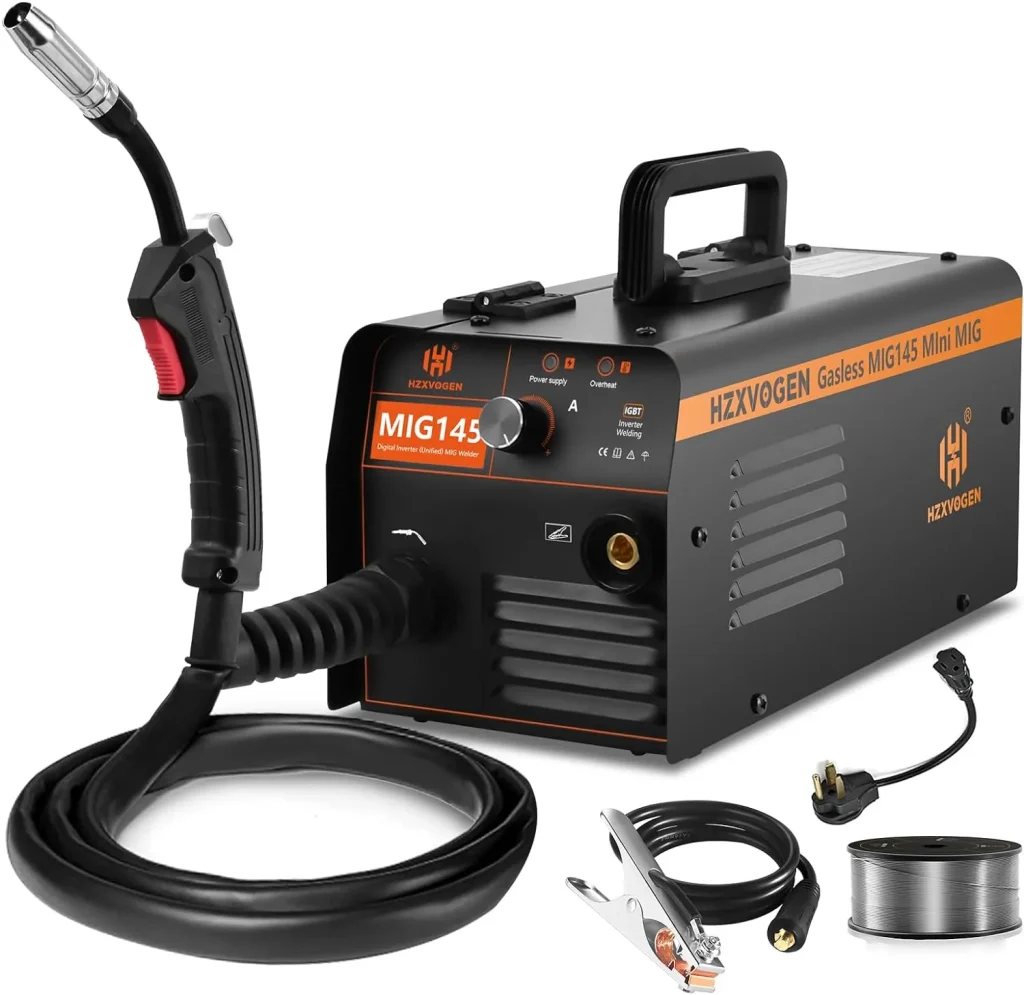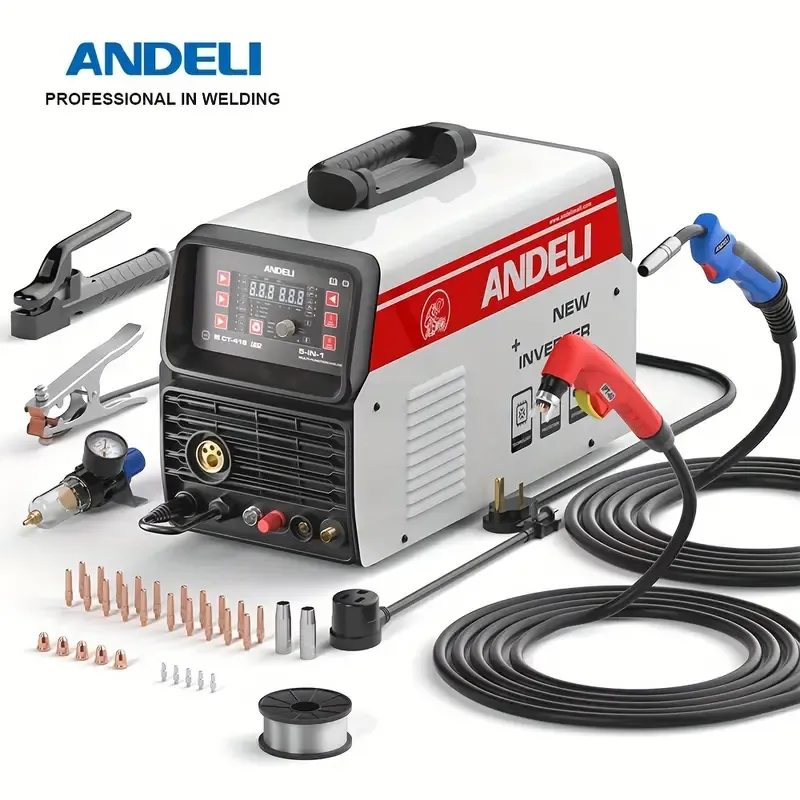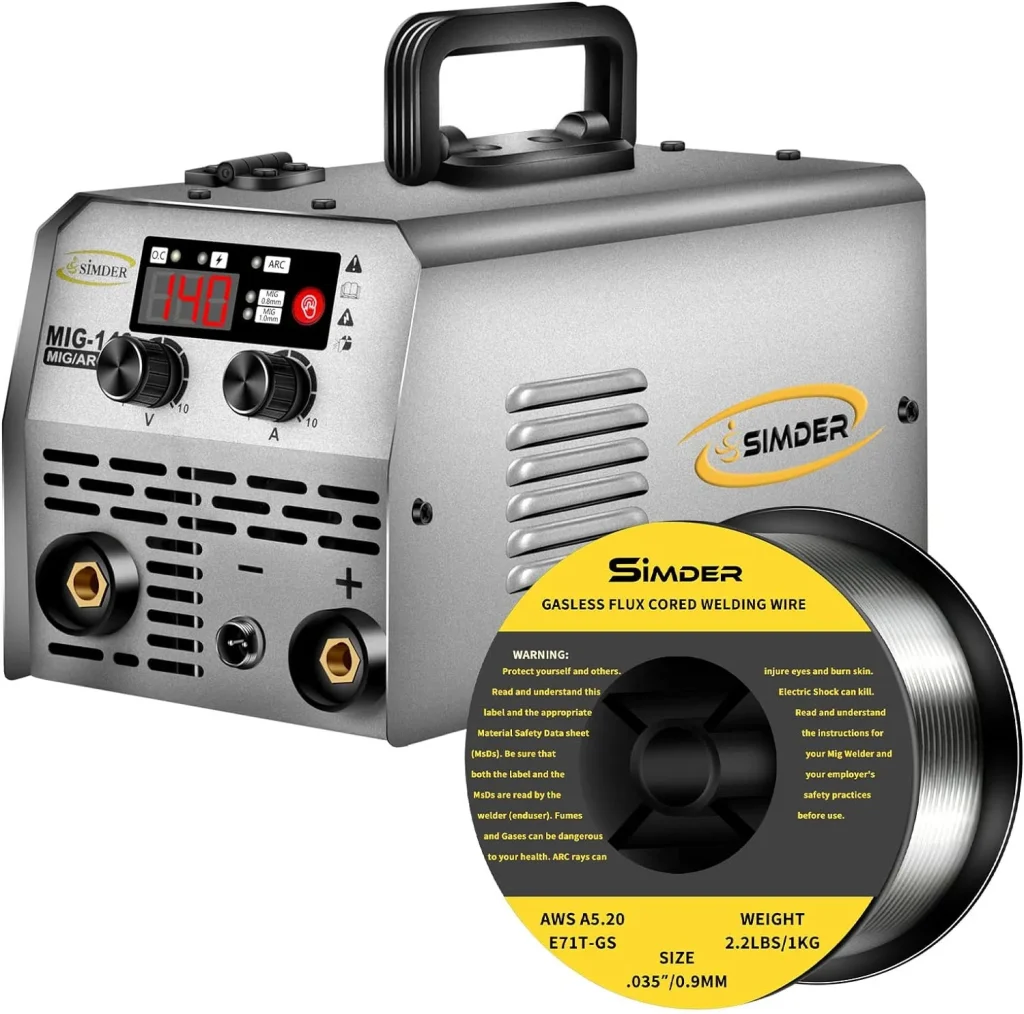MIG (Metal Inert Gas) welding, also known as Gas Metal Arc Welding (GMAW), is a widely used welding process known for its versatility and efficiency. It involves feeding a wire electrode through a welding gun, which melts into the weld pool to join the base materials. MIG welding is favored for its ability to weld a variety of metals, including steel, stainless steel, and aluminum, making it indispensable in industries ranging from automotive repair to manufacturing and construction.
The primary advantages of MIG welding include its ease of use, fast welding speeds, and ability to produce clean welds with minimal spatter. By controlling the welding parameters such as voltage, wire feed speed, and shielding gas flow, operators can achieve precise welds suitable for both thin sheet metals and thicker materials.
MIG welders are available in various configurations, including different power ratings and capabilities to suit different welding needs. Understanding the differences between 110v and 220v MIG welders is crucial for selecting the right tool for your projects.

Difference in Voltage: 110v and 220v
When choosing a MIG welder, one of the most important factors to consider is the voltage. MIG welders are commonly available in 110v and 220v configurations, each with its unique set of advantages and limitations. Understanding these differences can help you select the right welder for your specific needs.
110v MIG Welders
Advantages:
- Accessibility: 110v MIG welders can plug into any standard household outlet, making them highly accessible for home use, DIY projects, and small-scale repairs. This convenience is a significant benefit for hobbyists and those working in residential settings.
- Portability: These welders are generally more compact and lightweight, making them easy to transport and store. Their portability is ideal for jobs that require moving the welder between locations or using it in various parts of a workshop.
- Cost-Effective: 110v MIG welders tend to be more affordable than their 220v counterparts. This lower cost makes them an attractive option for beginners and those who do not require the higher power output of a 220v welder.
Limitations:
- Limited Power Output: 110v MIG welders have a lower power output compared to 220v models. This limitation affects their ability to weld thicker materials, as they may not provide sufficient penetration for heavy-duty tasks.
- Reduced Duty Cycle: These welders often have a shorter duty cycle, meaning they need more frequent breaks to cool down during extended welding sessions. This can slow down productivity for larger projects.
220v MIG Welders
Advantages:
- Higher Power Output: 220v MIG welders offer significantly higher power output, making them suitable for welding thicker materials and handling more demanding tasks. This capability is crucial for industrial applications and heavy-duty projects.
- Increased Duty Cycle: With a higher duty cycle, 220v welders can operate for longer periods without overheating. This feature allows for continuous welding on large-scale projects, improving overall efficiency and productivity.
- Better Weld Penetration: The higher voltage provides better penetration, resulting in stronger and more durable welds. This quality is essential for structural welding and applications requiring high-strength joints.
Limitations:
- Requires Special Outlets: 220v welders need a dedicated 220v electrical outlet, which is not commonly found in most residential settings. Installing these outlets can be costly and may require professional electrical work.
- Less Portable: Due to their larger size and higher power requirements, 220v welders are generally less portable than 110v models. This makes them more suited for stationary use in a dedicated workshop or industrial environment.
- Higher Cost: 220v MIG welders are typically more expensive, both in terms of initial purchase price and ongoing operating costs. This higher cost can be a barrier for hobbyists and those with limited budgets.
By understanding the differences between 110v and 220v MIG welders, you can better evaluate which type meets your specific requirements.
Energy Savings and Cost

When considering a MIG welder, understanding the energy consumption and associated costs between 110v and 220v models is crucial. This section explores how these factors can influence your decision-making process.
110v MIG Welders
Energy Consumption:
- Lower Power Requirements: 110v welders operate at lower voltages, resulting in lower energy consumption compared to 220v models. This can lead to cost savings on electricity bills, especially for intermittent or light-duty use.
Cost Considerations:
- Affordable Initial Investment: 110v MIG welders are generally more affordable to purchase upfront compared to 220v models. This makes them accessible for hobbyists, DIY enthusiasts, and small businesses with budget constraints.
- Lower Operating Costs: With lower energy consumption, maintenance costs, and potential savings on infrastructure (no need for specialized outlets), 110v welders offer ongoing cost advantages over their higher voltage counterparts.
220v MIG Welders
Energy Consumption:
- Higher Power Requirements: 220v welders require more electricity to operate due to their higher voltage and power output. This can result in higher energy bills, particularly in environments where the welder is used frequently or continuously.
Cost Considerations:
- Higher Initial Investment: 220v MIG welders typically come with a higher price tag due to their increased power capabilities and robust design. This initial investment may be a barrier for smaller operations or hobbyists on a tight budget.
- Potential Long-Term Savings: Despite higher upfront costs, 220v welders may offer long-term savings in productivity and efficiency for professional welders and industrial applications. Higher duty cycles and faster welding speeds contribute to overall cost-effectiveness in high-demand environments.
Choosing the Right MIG Welder
When deciding between a 110v and 220v MIG welder, consider the following factors:
- Type of Projects: Assess the thickness and type of materials you plan to weld. 110v welders are suitable for light to medium-duty tasks, while 220v models excel in heavy-duty applications.
- Budget: Determine your budget for both the initial purchase and ongoing operational costs, including electricity and maintenance.
- Power Requirements: Evaluate the availability of power outlets and electrical infrastructure in your workspace. Installing a 220v outlet may require professional electrical work and additional costs.
- Long-Term Goals: Consider your future welding needs and whether investing in a higher voltage welder aligns with your professional or personal growth plans.
Choosing the Right MIG Welder

Selecting the right MIG welder involves careful consideration of various factors to ensure it meets your specific needs. Here are some key points to guide your decision between a 110v and a 220v MIG welder:
Assess Your Welding Needs
Project Types:
- Light-Duty Projects: If your primary focus is on light-duty tasks such as automotive repairs, home improvement projects, or small-scale fabrication, a 110v MIG welder will likely suffice. These welders handle thin materials effectively and are suitable for intermittent use.
- Heavy-Duty Projects: For more demanding tasks, such as industrial applications, heavy fabrication, or continuous use, a 220v MIG welder is more appropriate. These welders can handle thicker materials and provide better penetration and durability.
Material Thickness:
- Thin Materials: 110v MIG welders are ideal for materials up to 1/8 inch (3.2 mm) thick. They are suitable for welding sheet metal, thin steel, and light aluminum.
- Thick Materials: If you frequently work with materials thicker than 1/8 inch, a 220v MIG welder is necessary. These welders can handle materials up to 1/2 inch (12.7 mm) or more, providing the power needed for strong, reliable welds.
Evaluate Power and Electrical Infrastructure
Available Power Outlets:
- 110v Outlets: Standard household outlets are compatible with 110v welders, making them convenient for home and small workshop use without requiring electrical upgrades.
- 220v Outlets: 220v welders require a dedicated 220v outlet, which may necessitate professional installation. Ensure you have the necessary infrastructure or are willing to invest in it.
Power Requirements:
- Lower Energy Consumption: 110v welders consume less energy, resulting in lower electricity bills and operating costs. They are more economical for occasional use.
- Higher Energy Consumption: 220v welders consume more power but are more efficient for high-demand, continuous use. Consider the long-term energy costs based on your welding frequency and duration.
Budget Considerations
Initial Purchase Cost:
- 110v Welders: Generally more affordable, making them a good choice for beginners, hobbyists, and those with budget constraints.
- 220v Welders: Higher initial investment but offer greater power and performance. Suitable for professionals and businesses requiring robust welding capabilities.
Operational Costs:
- Maintenance: Regular maintenance is crucial for both types of welders. Ensure you budget for consumables, replacement parts, and any necessary repairs.
- Energy Costs: Factor in the ongoing energy costs associated with the higher power consumption of 220v welders, especially if used frequently.
User Experience and Skill Level
Ease of Use:
- 110v Welders: Easier to set up and use, making them ideal for beginners and DIY enthusiasts. User-friendly features and simple controls are common in these models.
- 220v Welders: Require more experience and skill to operate effectively. Advanced features and settings may offer greater control but can be more complex for novices.
Long-Term Goals
Future Projects:
- Scalability: Consider your future welding needs and whether a higher voltage welder aligns with your long-term goals. Investing in a 220v welder may be beneficial if you plan to take on more demanding projects or expand your welding capabilities.
- Professional Growth: For those pursuing a career in welding or looking to enhance their professional workshop, a 220v MIG welder offers the power and durability needed for a wide range of applications.
By carefully evaluating these factors, you can make an informed decision that aligns with your specific needs and goals.
Conclusion
Choosing between a 110v and a 220v MIG welder depends on your specific needs, budget, and future goals. 110v MIG welders are ideal for light-duty tasks, home repairs, and DIY projects due to their affordability, ease of use, and compatibility with standard household outlets. They are portable and perfect for beginners. On the other hand, 220v MIG welders offer higher power output, making them suitable for heavy-duty tasks, industrial applications, and welding thicker materials. While they require a dedicated 220v outlet and are more expensive, they provide better performance and durability for professional use. Consider your project requirements, power availability, and long-term plans to make an informed decision. Both types have their advantages, so choose the one that best fits your welding needs.
Leave a Reply